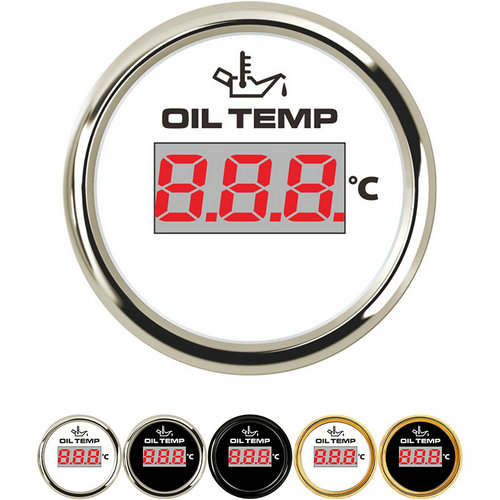why do you install oil temp gauge
The function of an automobile oil thermometer is to display the temperature of the engine oil. The higher the temperature, the lower the resistance. If there is an abnormal situation where the oil temperature is too high, a reminder and warning will be provided through the oil temperature indicator.
1. Installation position and function of transmission oil temperature sensor The transmission oil temperature sensor is installed on the valve plate in the automatic transmission oil pan. Its function is to detect the temperature of the automatic transmission hydraulic oil, which serves as the basis for the electronic control unit to perform shift control, oil pressure control, and lock up clutch control.
2. Structure and Working Principle of Transmission Oil Temperature Sensor The transmission oil temperature sensor has a negative temperature coefficient semiconductor thermistor inside it. The higher the temperature, the lower the resistance. The characteristic curve of its resistance changing with temperature is shown in the characteristics of the negative temperature coefficient thermistor in the coolant temperature sensor. The computer measures the temperature of the automatic transmission hydraulic oil based on changes in its resistance.
3. Detection method of transmission oil temperature sensor. (1) Measure the resistance of the oil temperature sensor Remove the transmission oil temperature sensor, place the sensor in a beaker filled with water, heat the water in the beaker, and measure the resistance between the two terminals of the sensor at different temperatures.(2) The sensor resistance standard value compares the measured resistance value with the specified value. If the resistance value differs greatly from the specified value, it should be replaced.
4. Symptoms of a broken transmission oil temperature sensor The transmission oil temperature sensor is used to detect the temperature of the automatic transmission hydraulic oil as a basis for the electronic control unit to perform shift control, oil pressure control, and lock up clutch control. The automatic transmission oil temperature sensor is installed on the control valve to mainly control the high temperature of the transmission. If the transmission oil temperature sensor fails, it will not be able to detect the temperature of the transmission oil, thereby failing to provide an oil temperature signal to the transmission computer, which may lead to transmission shift shock. When the transmission oil temperature is higher than 150 ° C, the torque converter immediately enters the lock up condition. If the transmission oil temperature does not decrease after 30s, the torque converter unlocks the lock up condition and the transmission exits overdrive. If the oil temperature sensor itself or the wiring harness is shorted, the data flow will indicate that the transmission oil temperature is higher than 150 ° C. Therefore, after the oil temperature sensor itself or the wiring harness is shorted, the torque converter will not enter the lock up condition, the transmission will not be in overdrive, and the vehicle will not be in high speed.
 English
English 



Get a Quote / Info